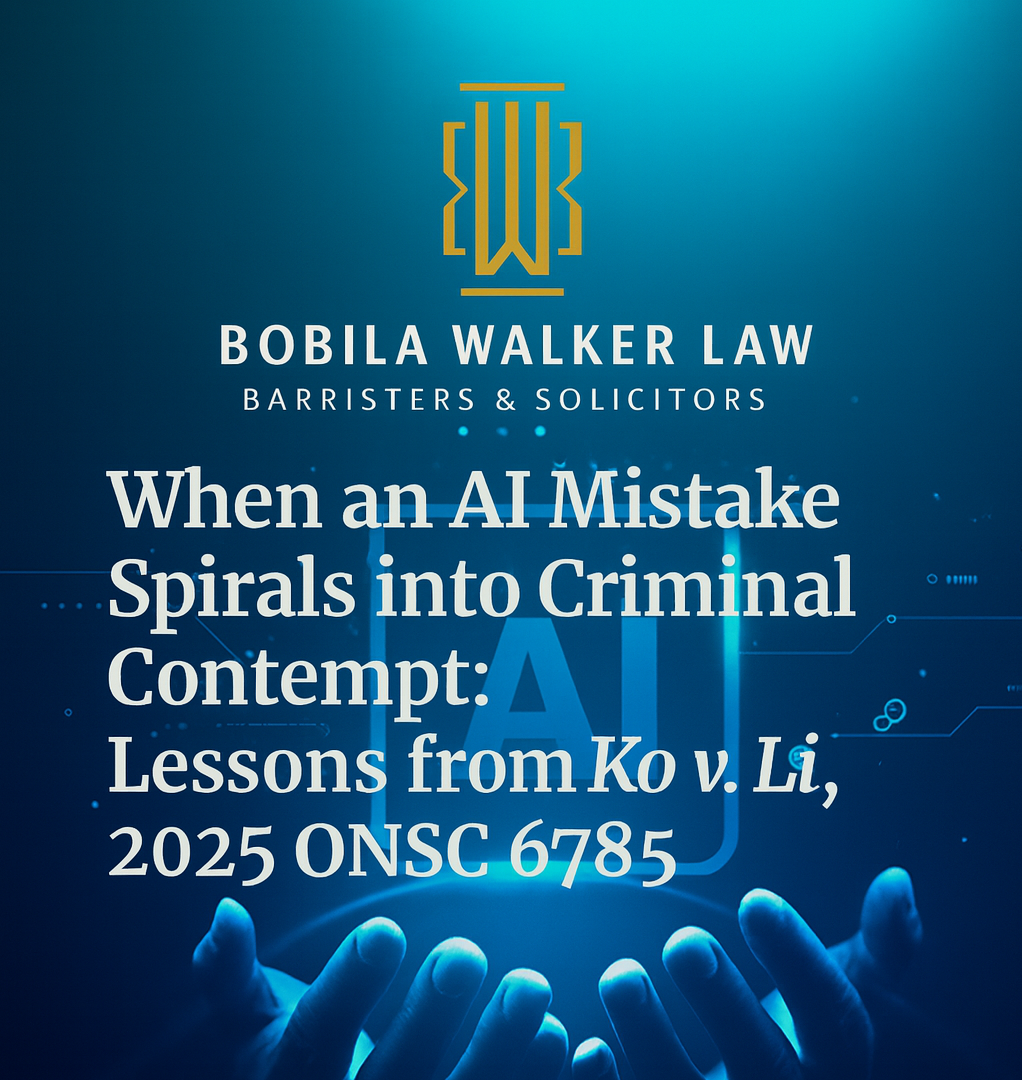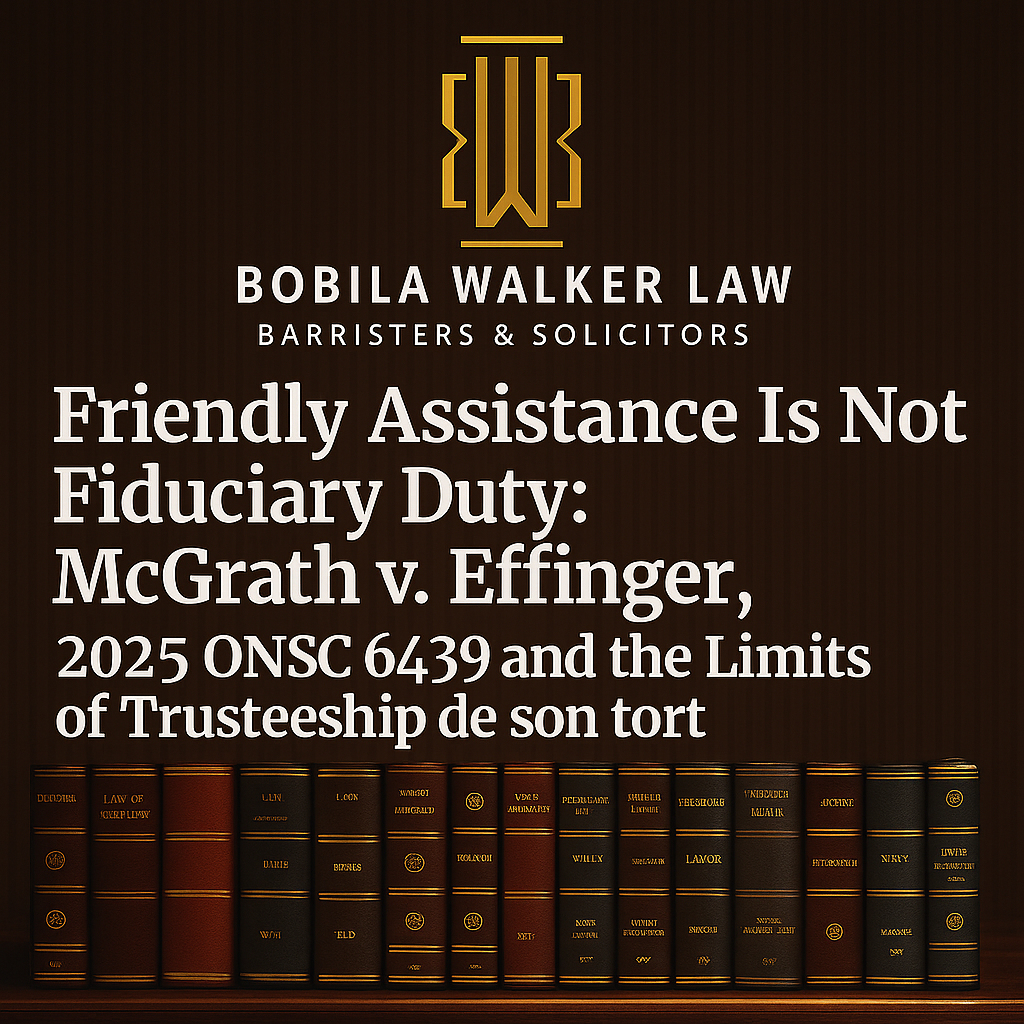The Ontario Court of Appeal’s decision in Stewart Estate v. Stewart, 2025 ONCA 575 (CanLII), decided on July 30, 2025, addresses critical issues in estate administration, particularly the tension between honoring a testator’s wishes and managing substantial tax liabilities. This case, arising from motions to stay an order interpreting the will of William Archibald Stewart, underscores the complexities of administering estates with significant assets and outdated provisions.
Case Background
William Archibald Stewart died on February 18, 1994, survived by his wife, Edith Marie Stewart, and their 13 children. His will, dated February 20, 1989, granted Edith a life estate in his assets, with two farm properties—designated the “Robert Farm” and the “Winfield Farm”—to be transferred to his sons Robert and Winfield, respectively, upon her death. These transfers were conditional on Robert paying $50,000 and Winfield paying $90,000, structured as options to purchase. Other children received lesser bequests.
By the time of Edith’s death, approximately 24.5 years later, the farms’ values had increased significantly. The Robert Farm was valued at $617,500, and the Winfield Farm at $1,120,000. However, Edith’s death triggered capital gains tax liabilities of approximately $600,000, secured by liens from the Canada Revenue Agency (CRA) on the properties, with interest accruing daily. The CRA threatened to seize and sell the farms if the debts remained unpaid.
The estate trustees, June Hale and Edward Stewart, sought judicial guidance on their authority to manage the estate’s debts, leading to the primary decision reported at 2025 ONSC 2275.
The Primary Decision
In the underlying Superior Court decision, Justice Chown addressed three consolidated applications concerning the interpretation of William’s will. The court ruled that the estate trustee has discretion to sell, mortgage, or otherwise leverage the farms to satisfy estate debts, including the CRA tax liability. Key findings included:
The trustee could determine the farms’ value through appraisal or market sale and could enter arrangements with beneficiaries to preserve the testamentary intent while addressing debts.
After paying estate debts, including taxes and an estate trustee loan, any remaining proceeds from a sale would be distributed to Robert’s estate (represented by his widow, Lynn Stewart) and Winfield, respectively.
This ruling prioritized the estate’s solvency while acknowledging the will’s intent to benefit Robert and Winfield.
Motions for a Stay
Lynn Stewart (Robert’s widow and heir) and Winfield Stewart moved independently to stay the order pending appeals, arguing that selling the farms would effectively nullify the testamentary “gifts” by preventing them from exercising their options at the will’s fixed prices. They proposed alternatives, such as covering the tax liabilities themselves, to retain the farms. The motions were heard on July 17, 2025, before Justice Lauwers, who applied the test from RJR-MacDonald Inc. v. Canada (Attorney General), [1994] 1 S.C.R. 311, which considers:
Whether there is a serious question to be tried.
Whether the applicants would suffer irreparable harm if the stay is denied.
The balance of convenience between the parties.
The Court of Appeal’s Endorsement
In the endorsement, Justice Lauwers dismissed the motions for a stay, addressing each factor:
Serious Question to be Tried: The court noted that neither Lynn nor Winfield had filed factums or perfected their appeals, hindering a clear assessment of the merits. Their argument—that they should purchase the farms at the will’s fixed prices without addressing the full tax liability—was problematic, as it would expose the trustee to personal liability for unpaid taxes without a CRA clearance certificate. The primary decision allowed flexibility, such as appraisals or beneficiary-funded debt payments, but the movants failed to articulate a compelling issue requiring a stay.
Irreparable Harm: The court rejected claims of irreparable harm, finding that the farms, leased to third parties, were not “unique” assets in a legal sense. Any loss could be compensated financially, as the issues were primarily monetary.
Balance of Convenience: The court favored the estate trustees, citing the accruing interest on the tax debt and the risk of CRA seizure. Delaying the sales would increase financial burdens on the estate, potentially reducing value for all beneficiaries.
The motions were dismissed, with costs of $20,000 awarded to the estate trustees, to be paid equally by Lynn and Winfield.
Legal Implications
Stewart Estate v. Stewart highlights several key considerations for estate planning and administration:
Outdated Will Provisions: Fixed purchase prices in a will, set decades earlier, can become misaligned with current asset values and tax obligations, complicating estate administration.
Trustee Discretion: The case affirms the broad authority of estate trustees to manage assets to fulfill fiduciary duties, even if it means overriding specific testamentary provisions to address debts.
Tax Planning: Significant capital gains taxes triggered by the termination of a life estate underscore the need for proactive tax planning in estate documents.
Conclusion
This case serves as a cautionary tale for estate planners and families. Regularly updating wills to reflect current asset values and tax implications is critical to avoiding disputes and ensuring a testator’s intentions are feasible. For legal practitioners, Stewart Estate v. Stewart reinforces the importance of balancing fiduciary responsibilities with testamentary intent, particularly in the face of substantial external pressures like tax liabilities.
Citation: Stewart Estate v. Stewart, 2025 ONCA 575 (CanLII)





